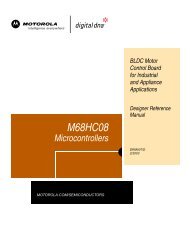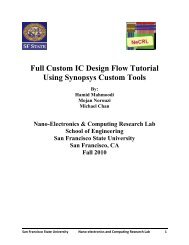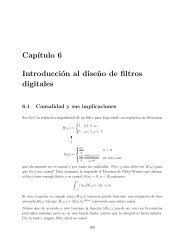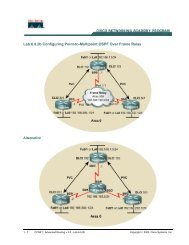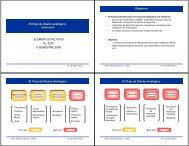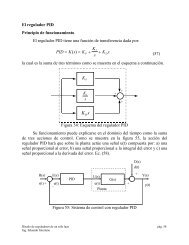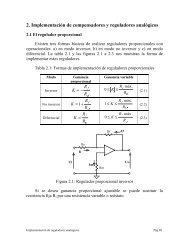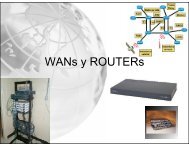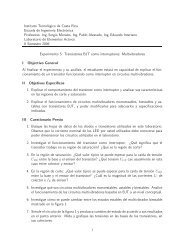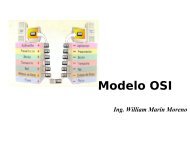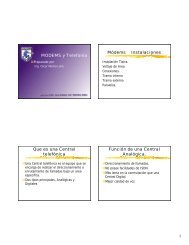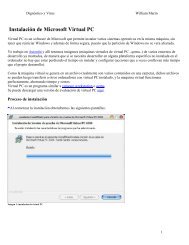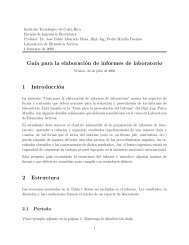Chapter 6 Experimental Mapping Method
Chapter 6 Experimental Mapping Method
Chapter 6 Experimental Mapping Method
You also want an ePaper? Increase the reach of your titles
YUMPU automatically turns print PDFs into web optimized ePapers that Google loves.
170 ENGINEERING ELECTROMAGNETICS<br />
tell us exactly how the charges are distributed. Instead, we are usually given<br />
several conducting objects or conducting boundaries and the potential difference<br />
between them. Unless we happen to recognize the boundary surfaces as belonging<br />
to a simple problem we have already disposed of, we can do little now and<br />
must wait until Laplace's equation is discussed in the following chapter.<br />
Although we thus postpone the mathematical solution to this important<br />
type of practical problem, we may acquaint ourselves with several experimental<br />
methods of finding the potential field. Some of these methods involve special<br />
equipment such as an electrolytic trough, a fluid-flow device, resistance paper<br />
and the associated bridge equipment, or rubber sheets; others use only pencil,<br />
paper, and a good supply of erasers. The exact potential can neverbe determined,<br />
but sufficient accuracy for engineering purposes can usually be attained.<br />
One othermethod, called the iteration method, does allow us to achieve any<br />
desired accuracy for the potential, but the number of calculations required<br />
increases very rapidly as the desired accuracy increases.<br />
Several of the experimental methods to be described below are based on an<br />
analogy with the electrostatic field, rather than directly on measurements on this<br />
field itself.<br />
Finally, we cannot introduce this subject of experimental methods of finding<br />
potential fields without emphasizing the fact that many practical problems<br />
possess such a complicated geometry that no exact method of finding that field is<br />
possible or feasible and experimental techniques are the only ones which can be<br />
used.<br />
6.1 CURVILINEAR SQUARES<br />
Our first mapping method is a graphical one, requiring only pencil and paper.<br />
Besides being economical, it is also capable of yielding good accuracy if used<br />
skillfully and patiently. Fair accuracy (5 to 10 percent on a capacitance determination)<br />
may be obtained by a beginnerwho does no more than follow the few<br />
rules and hints of the art.<br />
The method to be described is applicable only to fields in which no variation<br />
exists in the direction normal to the plane of the sketch. The procedure is<br />
based on several facts we have already demonstrated:<br />
1. A conductor boundary is an equipotential surface.<br />
2. The electric field intensity and electric flux density are both perpendicular to<br />
the equipotential surfaces.<br />
3. E and D are therefore perpendicular to the conductor boundaries and possess<br />
zero tangential values.<br />
4. The lines of electric flux, or streamlines, begin and terminate on charge and<br />
hence, in a charge-free, homogeneous dielectric, begin and terminate only on<br />
the conductorboundaries.



